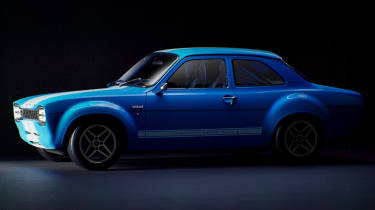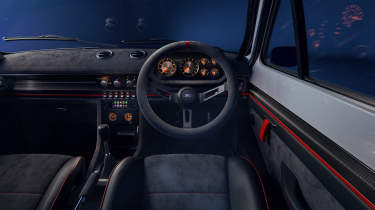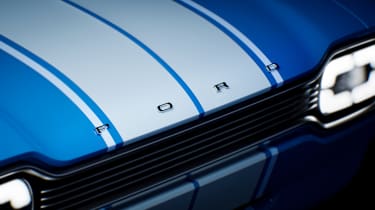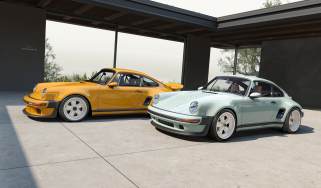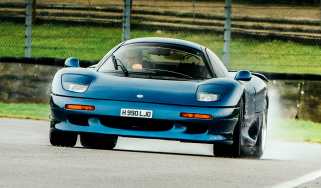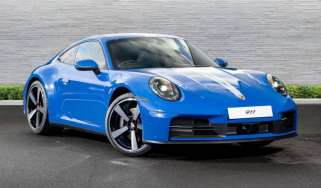The Ford Escort RS is returning as a 10,000rpm £295k continuation
Boreham Motorworks’ ‘continumod’ RS is a 1960s Mk1 Escort engineered and manufactured to 21st century standards – and a reimagined RS200 is next
This gleaming green Escort Mk1 RS is a reinterpretation of the 1960s original, engineered and manufactured to 2025 standards. Just don’t call it a restomod. Its creators, Boreham Motorworks, describe it as a ‘continumod’. Officially licensed by the Ford Motor Company, each from-scratch new-build RS will have a continuation Escort chassis number. The new cars are built to the dimensions of a ’60s race-spec Escort RS but will possess a far more rigid structure, be produced to the standards and tolerances of a modern-day mainstream manufacturer, and be homologated for small-series production.
That differentiates the Boreham Escort from cars such as the (excellent) MST Mk1 driven in evo 319, which is a different take on the concept in that it’s officially not a Ford Escort but a brand-new car built from brand-new parts, with each car individually approved for road legality.
> Ford Escort Alan Mann 68 Edition 2025 review – the ultimate reborn classic fast Ford?
Only 150 new Escorts will be built, to be sold worldwide. The price of present-day quality, Ford’s seal of approval and the chance to buy what promises to be a brand-new, better-than-original Mk1 Escort in 2025 is high: customers will pay £295,000 per car, before personalisation options. Nonetheless, Boreham says sales of the entire scheduled run have been oversubscribed by double the allocation ahead of production starting this autumn.
Its reimagined RS200, which will be revealed in the autumn, will be less of a replica, more of a spiritual successor, with a modernised design. Further re-engineered, reimagined Ford models are planned to follow.
Visiting Boreham’s Coventry design and engineering base to view both Escort and RS200 – albeit largely as renders (as shown here), CAD files and through the medium of a 3D headset in the design studio – is a thoroughly 21st century experience. The first physical Escort prototypes are currently in the final phase of construction.
Boreham Motorworks – named after Ford Motorsport’s former HQ in Boreham, Essex, where, amongst others, the original RS200 rally cars were run from – is a subdivision of the wider DRVN Automotive group, which owns a number of automotive design, engineering and retail companies in the UK (including Koenigsegg’s London dealership). Part of its portfolio is what used to be Penso: a design and engineering consultancy in Coventry with numerous high-profile projects to its name, including developing the manufacturing of the aero surfaces for the AMG GT Black Series and engineering Jaguar’s C‑X75 hypercar prototypes.
This background enables Boreham to produce the new Escort almost entirely in-house, from design (led by former Jaguar Land Rover design director Wayne Burgess), through production engineering, chassis dynamics and beyond to completion. In total, DRVN employs 200 designers, engineers and craftspeople. The Coventry R&D centre looks after initial design, engineering, building prototypes and creating tooling, before handover to production at various facilities. Peak production across the DRVN group is planned to be 300-400 vehicles a year, including the Ford models.
‘There’s no existing CAD data for the Mk1 Escort,’ Burgess tells us. ‘We scanned an Escort Mexico and others and found that no two cars are quite the same…’ Given that Boreham’s aim is to create a repeatable OEM-grade car, homologated for European small-series production with mandated pedestrian- and side-impact requirements, that presents a real challenge. ‘We’re packaging things that weren’t on the original, such as air-conditioning,’ he adds. ‘It basically needs to be a TARDIS.’
Sitting inside the Escort (virtually via 3D goggles), you find yourself behind a deep-dished steering wheel with all the slim-pillared visibility you’d expect of a ’60s car and a neat interior with modern but sympathetically integrated switchgear, plus the option of smartphone connectivity.
The Boreham car will feature a different rear suspension layout from the original RS’s live axle and leaf springs, which means engineering new cross-members as well as routing for a new exhaust system, for example, all within a wheelbase of no more than 2.7m. Ride quality is said to strike a compromise between that of a rose-jointed race car and a modern saloon. Customers should expect a relatively raw driving experience, however: DRVN’s slogan is ‘peak analogue’ and there will be no power steering, ABS or traction control. The target kerb weight, with lightweight options such as magnesium wheels fitted, is 800kg.
Customers have a choice of two engines: a 182bhp fuel-injected 1845cc version of the original twin-cam four-cylinder matched to a four-speed straight-cut gearbox, or the extra-cost option of a new 2.1-litre 295bhp four capable of revving to 10,000rpm and accompanied by a five-speed gearbox. Both adhere to modern emissions regulations and are covered by the car’s two-year/20,000-mile warranty.
DRVN does have a true-to-the-term restomod project under its auspices, too, separate from the Boreham cars: the 355 by Evoluto, a re-engineered version of the Ferrari F355, each example created from an original Ferrari donor vehicle with a planned production run of 55 cars. The work going into the Evoluto gives some more clues as to the engineering standards that will be applied to the Boreham Fords. For example, carbon-composite elements are integrated into the original F355’s bodyshell, giving it a 23 per cent increase in torsional rigidity. Only the roof and rear buttresses remain steel.
Many original F355 components are no longer available, including the wheel bearings. DRVN has designed a new flanged hub to be compatible with the original mechanical wheel-speed sensor for the ABS. Likewise, many F355s’ anti-roll linkages have become significantly worn due to age and need replacing, so DRVN has designed backward-compatible components that are 165g lighter.
Technical details for the RS200, meanwhile, are yet to be formally announced, including its powertrain. While its design is also still to be revealed, it’s a contemporary treatment of the original car’s lines, with a similarly smart but minimal interior to the Escort. Its dimensions remain compact, similar to those of a Porsche 911.
Boreham’s licensing deal with Ford will extend to further nameplates, but the company says it will concentrate only on European Ford models; it won’t seek to compete with the established scene around modified Mustangs and other Stateside models. What will follow the RS200 is yet to be confirmed.
DRVN also owns Alan Mann Racing, the historic racing outfit closely linked with Ford in the ’60s. The company says AMR will become Boreham’s ‘in-house’ performance division, so it’s logical to expect track-spec cars to follow the road-legal Escort and RS200. Given AMR’s historic connection to motorsport models such as the Ford GT40 and F3L, it would also seem likely that such cars will be figuring in DRVN’s designers’ thoughts.
Restomod or ‘continumod’, it’s easy to become blasé about yet another re-engineered reimagining of a classic car. However, DRVN’s ability to create a from-scratch new car largely in-house, with Ford’s blessing, gives it something of a USP. How seriously we should be taking this new enterprise will ultimately be confirmed when we drive the Escort RS in the coming months, but for now there’s plenty of reason to believe that it could be the most exciting Ford-badged car launched this decade.
This story was first featured in evo issue 333.


